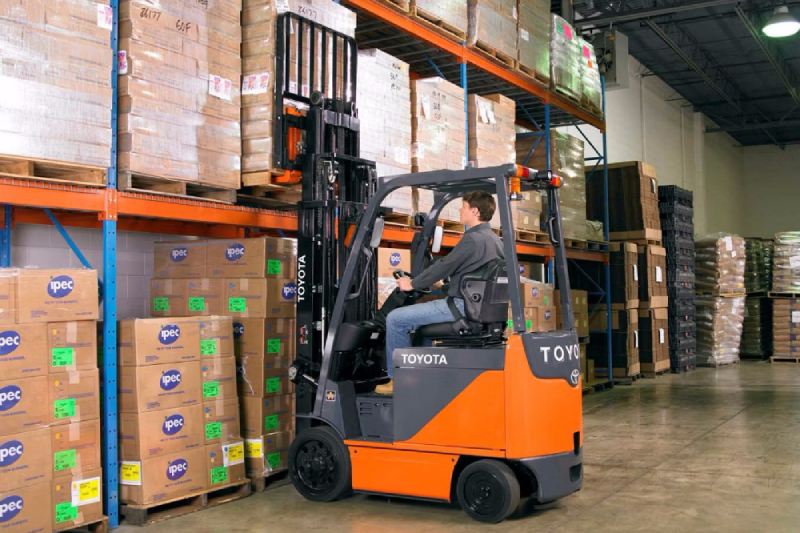How to Maintain Your Forklift Hydraulic System

How to Maintain Your Forklift Hydraulic System
You rely on your forklift to lift load after load and tremendous amounts of weight each and every day. Depending on the features and capabilities of your specific model, hydraulics can also play a role in steering, moving the side shifter, tilting the cab, and a variety of other auxiliary functions. The power to accomplish those tasks comes from your machine’s hydraulic system. Keeping that system in top working order is one of the most important parts of forklift maintenance.
To minimize downtime and ensure your material handling or warehouse operation runs smoothly and productively, follow our tips and best practices for forklift hydraulic system maintenance.
Change fluid at the correct intervals
Your hydraulic fluid is what transmits the power from one component to another to provide the muscle to lift your load. Replacing it regularly is a key part of forklift maintenance. Although intervals may be different depending on working conditions and your machine’s manufacturer, we recommend changing the fluid every 1,000 hours of operation. Check your owner’s manual for specific information.
Routinely replace filters
The primary cause of issues with forklift hydraulic systems is fluid contamination. After about 2,000 hours, the effectiveness of your filter generally begins to decrease, so we recommend changing it with every fluid change. Similar to replacing hydraulic fluid, when to add a new filter can vary based on your manufacturer and operating conditions, so be sure to read your owner’s manual or contact our team for specific interval information.
Inspect fluid levels
A crucial part of forklift hydraulic system maintenance is to regularly check the fluid levels, because if they get too low, it can damage your machine’s pumps and lead to cavitation. We suggest that you don’t mix different fluid types together, and that you make sure the fluid you top off with meets the specifications provided by the manufacturer.
Send in samples for hydraulic fluid analysis
Sampling fluids to compare particle contaminant levels to normal wear rates helps identify potential hydraulic system problems before a major failure occurs. Routine fluid analysis is a proactive measure to avoid unnecessary downtime and costly repairs.
Conduct daily walkarounds
One of the most important parts of forklift maintenance in general, and hydraulic system maintenance in particular, is to visually check the different components before beginning each shift. Inspect the tube rods, tube seals, hydraulic lines, breather caps, filter screens, breather filters, and all other pipes, connections, and hoses. Look for signs of damage or excessive wear and tear, like rust, pitting, corrosion, hose ballooning, pinches, kinks, frays, and bubbling. Keep all components as clean as possible, so it is easy to spot any issues, and replace damaged parts before operating the machine.
Listen to the pumps
Listening to the hydraulic pumps can alert you if cavitation is present and is an important piece of forklift maintenance. While similar to aeration, cavitation is the result of gas bubbles experiencing rapid changes in pressure. They implode and cause miniature shock waves. These generate wear and repeated stress on the metal surfaces, damaging the components. If a pump is cavitating, it will typically release a high pitched whining sound. Regularly replacing filters, maintaining adequate fluid levels, and using the correct hydraulic oil can help prevent cavitation.
Be aware of hydraulic system temperature
If your system temperature gets too hot, it could indicate an issue with your cooler or relief valve. Low fluid levels could also contribute to heat. We suggest using built in or infrared thermometers to keep an eye on temperatures. Consult your owner’s manual to find specific temperature parameters for your specific forklift hydraulic system.
Test the electric drive motor
You can also use your infrared thermometer on the electric drive motor to detect any areas of high temperatures, like the housing or rotor bearings. If you notice excessive heat, it may be an indication that service is required to avoid damage to the equipment.
If you have any questions about forklift hydraulic system maintenance or forklift maintenance in general, contact our team.
